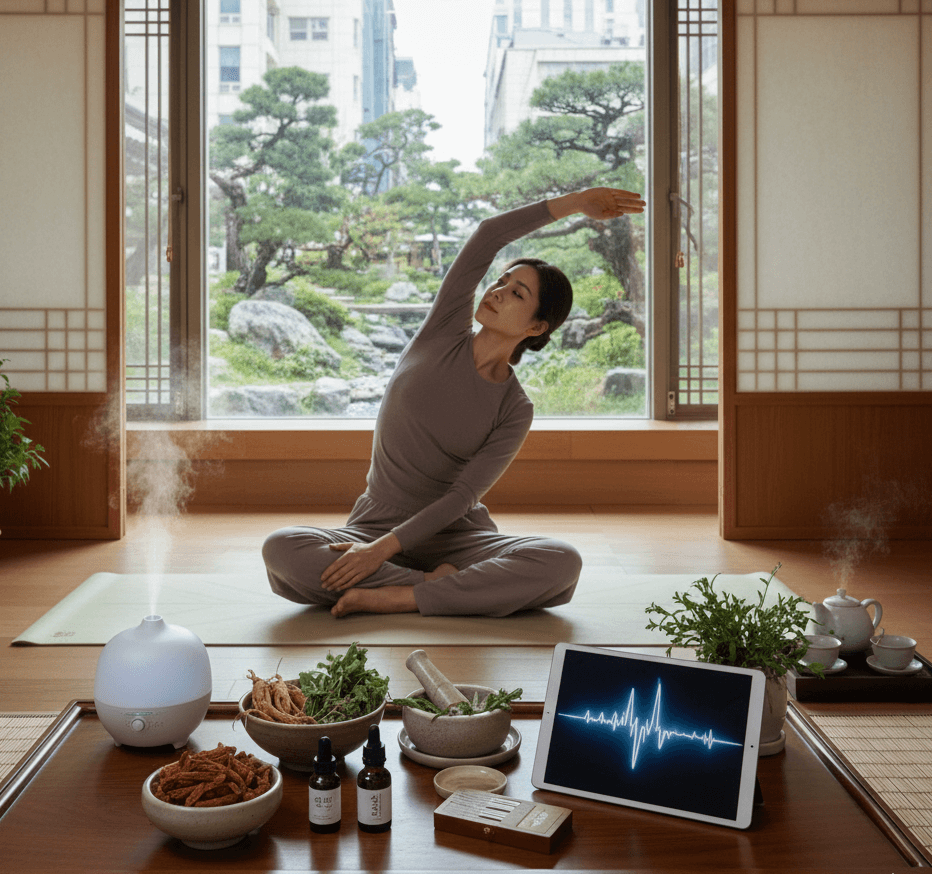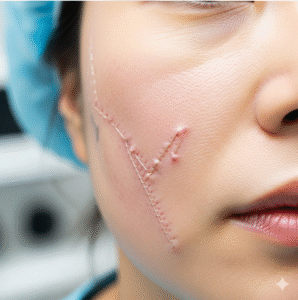Yoga and mindfulness are no longer niche practices in Korea. They are rapidly evolving, blending traditional Eastern philosophy with modern science, wellness culture, and digital innovation. In 2026, these practices have become a central part of Korean daily life, with growing attention from universities, health experts, and wellness communities.
➤ Mind–Body Connection in a Fast-Paced Society
Korea’s fast-paced and high-pressure lifestyle has led to a surge of interest in yoga and mindfulness as tools for stress management and emotional balance. Many Koreans now view yoga not just as physical exercise but as a holistic method for mental clarity and self-regulation. Studies show that consistent yoga practice improves focus, reduces anxiety, and enhances emotional resilience.
In modern Korean society, yoga studios often emphasize breathing techniques, meditation, and mindful stretching. This shift shows that people are turning to yoga as a form of mental therapy rather than just physical fitness.
➤ The Rise of Mindfulness Research in Korea
Mindfulness meditation has become an important field of academic study in Korean universities. Over the past two decades, there has been a steady increase in published research on how mindfulness can improve mental health, workplace focus, and overall life satisfaction.
This growing body of research supports what many practitioners already know: mindfulness reduces stress, improves emotional regulation, and helps prevent burnout. Korean researchers are also exploring how mindfulness can integrate with traditional Korean medicine, emphasizing natural balance and mental harmony.
➤ Digital and App-Based Mindfulness Practices
Technology is reshaping how Koreans approach meditation and yoga. The mindfulness app market in Korea is expanding rapidly, offering guided sessions in the Korean language and AI-driven tracking for relaxation and breathing.
Many apps feature programs developed by Buddhist monks, therapists, and yoga instructors, blending traditional wisdom with modern delivery. Some platforms now connect to smartwatches or home assistants, allowing users to monitor their breathing rate, stress level, and heart rate variability.
This fusion of technology and mindfulness makes it easier for busy professionals and students to practice daily, even for just a few minutes between classes or meetings.
➤ K-Wellness and Hybrid Yoga Styles
Korea’s growing wellness culture—often called K-Wellness—is redefining how yoga and meditation fit into modern life. Studios are now offering hybrid forms of yoga that combine breathing techniques, K-pop rhythms, and traditional Korean healing philosophies.
Some classes integrate Hanbang (Korean traditional medicine) elements, using herbal scents, sound therapy, and tea rituals to deepen relaxation. This fusion creates a more accessible and culturally relevant experience for Korean audiences, linking physical health, mental calm, and cultural identity.
➤ Mindfulness in Schools, Workplaces, and Communities
Mindfulness practices are expanding beyond yoga studios into schools, offices, and public programs.
- Schools are introducing short meditation breaks and breathing sessions to help students focus and reduce exam stress.
- Companies are offering workplace yoga and mindfulness programs to improve employee productivity and mental health.
- Community centers and local governments host group meditation walks, forest breathing sessions, and public wellness events.
These efforts aim to make mindfulness a social and cultural habit, not just an individual hobby. It reflects a national shift toward viewing emotional health as a community value.
➤ Emerging Trends to Watch in 2026
Several new directions are shaping Korea’s yoga and mindfulness scene:
- Tech-Enhanced Practices: Wearables and smart devices offering real-time feedback on stress and relaxation levels.
- Micro-Mindfulness: Short 3–5 minute breathing or stretching routines integrated into everyday activities.
- Nature-Based Retreats: Wellness programs combining yoga, meditation, and forest therapy in eco-resorts or temple stays.
- Community Circles: Small local groups practicing meditation together, promoting social connection and accountability.
These evolving forms reflect how modern Koreans are personalizing mindfulness—making it flexible, accessible, and consistent with their lifestyles.
➤ Challenges and Opportunities
While interest in mindfulness and yoga continues to grow, several challenges remain:
- Scientific validation is still developing, with more clinical studies needed on the effects of long-term mindfulness in Korean populations.
- Cultural adaptation is important; Western yoga and meditation practices must be localized to fit Korean social norms.
- Accessibility in rural areas or among older adults needs improvement through simpler programs and mobile guidance.
- Balancing digital and human connection is key, as technology can help spread awareness but may not replace personal instruction and community support.
Addressing these issues will help sustain the growth of yoga and mindfulness in a way that remains authentic and inclusive.
➤ Why These Trends Matter
Korea’s embrace of yoga and mindfulness reflects a deeper cultural transformation. These practices offer natural, non-medical solutions for stress, anxiety, and burnout—issues that affect many in modern society.
By combining physical movement, conscious breathing, and self-awareness, yoga and mindfulness help people slow down, focus, and live with intention. For younger generations, these practices are becoming essential tools for navigating modern pressures while maintaining mental and emotional health.













